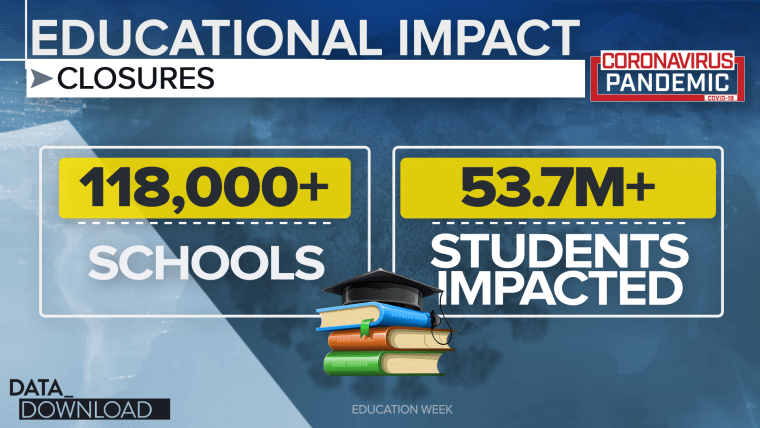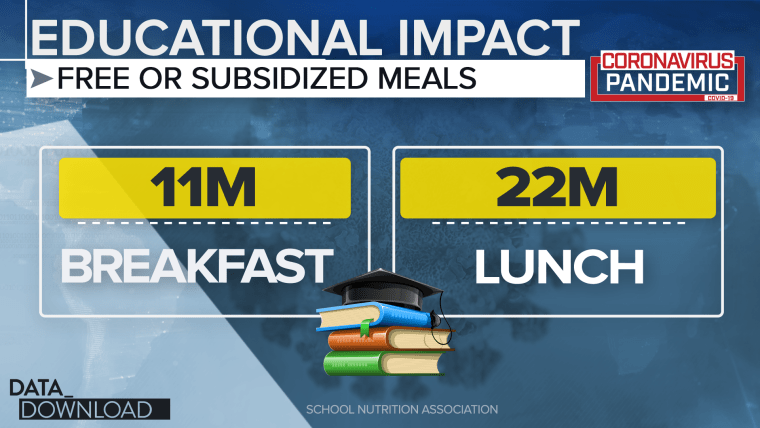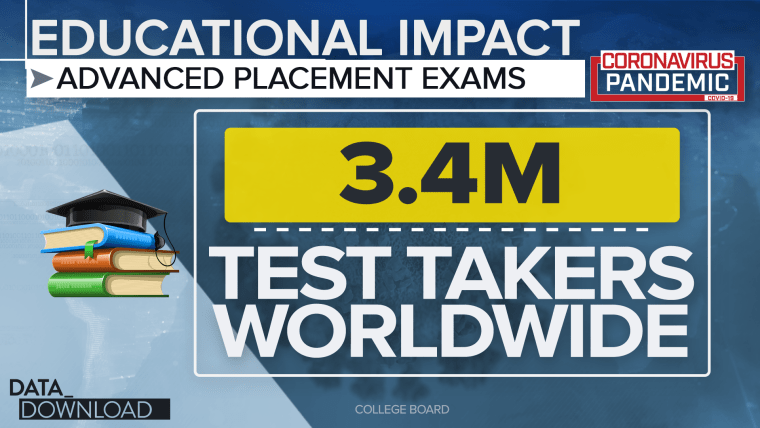WASHINGTON — Beyond the health effects and the impact on the economy, the coronavirus has created a long tail of impacts in the United States and the world, and one of the biggest impacts has come in education. The number of K-12 school closures has skyrocketed in the last few weeks with a great deal of uncertainty about when the virus may be tamed and when normal school days will resume.
The affected areas range from classroom instruction to meals for lower-income children and they are spread far and wide around the country.
Start with the most basic measure, the size of overall impacts.

As of Friday evening, 45 states and Washington D.C. had closed schools for at least several weeks. The state of Kansas went further and closed schools for the rest of the academic year. The last day of school there was slated for May 15. And these closures have come remarkably fast, the first state to close its schools was Ohio, only 10 days ago.
Currently, there are five states that have not closed all schools: Idaho, Iowa, Maine, Nebraska and Wyoming — and even in those states, the majority of schools are shuttered.
But thinking about states doesn’t truly express how big the affected population is.

As of Friday morning, Education Week tallied more than 118,000 schools closed and nearly 54 million children out of school. That tally takes in everything from 88,000 students in Vermont to more than 6.3 million in California.
Full coverage of the coronavirus outbreak
Over the next weeks, many of those schools are going to be trying out new ways to teach. They’ll be switching their regular curriculum to distance-learning, using email and the Internet and/or handouts that parents can pick up from schools. And in many cases, particularly with younger children, parents are going to have to pick up the slack and help teach from home.
For lower-income children, the closures equal a double challenge as free and subsidized school lunch programs figure how to provide what is an essential service for many students.

More than 20 million children receive free lunch at school, according to the School Nutrition Association. Close to another 2 million get a subsidized lunch. And along with those numbers, another 11 million children receive free breakfasts.
Those are potentially enormous holes in the safety-net for kids who come from households in poverty or near poverty. Schools understand that and they are adapting. Some are opening buildings to serve meals to impacted children or setting up grab-and-go centers for kids. That’s something they will be doing for the next few weeks at least.
And for high school students, particularly juniors and seniors, there is a question of getting the credits needed to graduate and, in some cases, take the Advanced Placement tests that will allow them to receive college credit for their classwork.
For some students, AP classes and May AP exams are a crucial part of lowering the overall cost of higher education by accumulating credits without paying college tuition. The reach of those classes and exams is broad.
There are 3.4 million students worldwide who are taking AP classes with the hope of doing well-enough on the exams to score credits, according to the College Board, the organization that administers those tests. And to aid those students, this year the College Board is offering students the ability to take those exams in their homes. Online courses and resources for the tests are available free of charge.
Download the NBC News app for full coverage of the coronavirus outbreak
“The College Board will be as flexible as possible to give students the best chance to show their skills and stay on the path to college,” the organization said in a statement. “We have recently announced that any student currently registered for an AP Exam is invited to take the exam from home this June. We’re working to give every AP student the opportunity to claim the credit they’ve earned.”
The College Board, which also administers the SAT test, has cancelled the May 2 testing day for that exam. It has not yet decided what to do about its June 6 SAT date. Those are big developments for high school students who need to take or retake those tests.
As the COVID-19 pandemic stretches on, its impacts on education are a good example of how the disease has both short- and long-term impacts. We don’t yet know how long students will be out of school this year or how well the schools’ distance learning plans will work.
Will make-up courses or remedial education be required? There will be a lot of educational experimentation in the next few weeks, will some of those experiments lead to larger changes in the education system? Will they also become part of the broader political discussion around education?
The pandemic is prompting unprecedented, sweeping responses in education in the United States. Those responses seem likely have impacts into the fall and perhaps long after that.